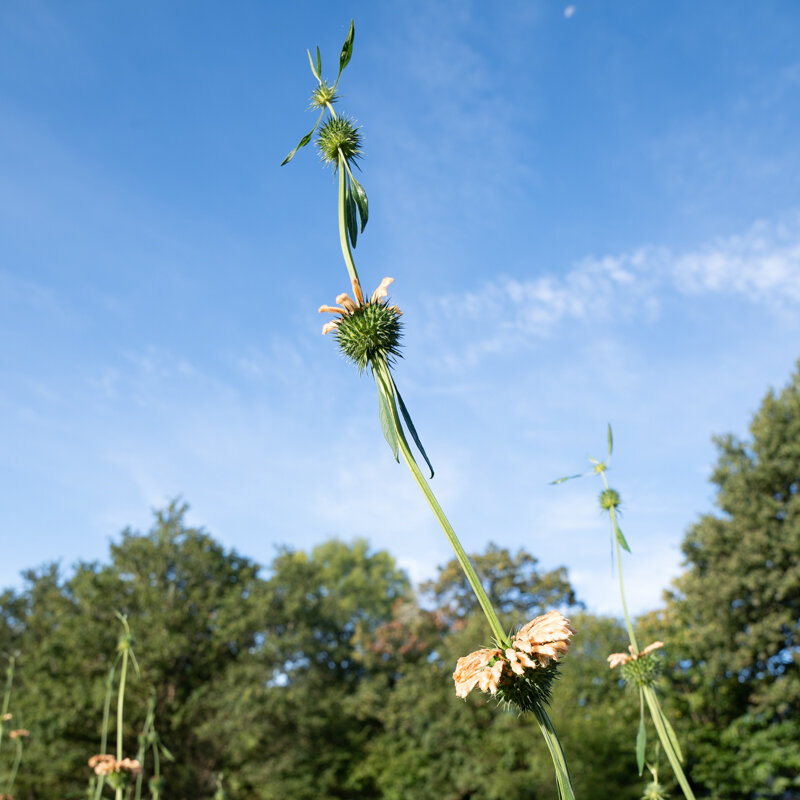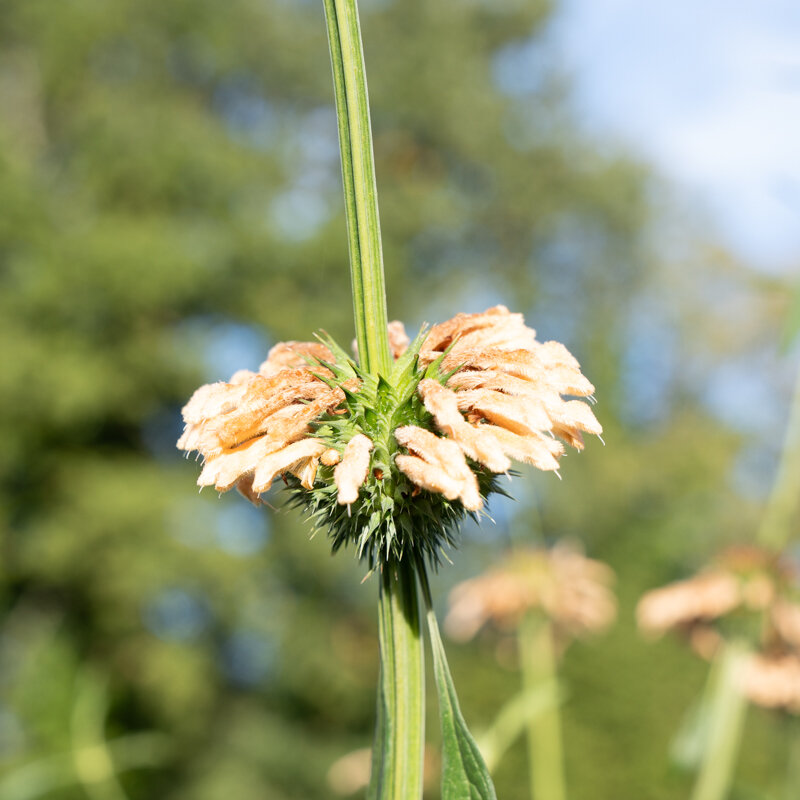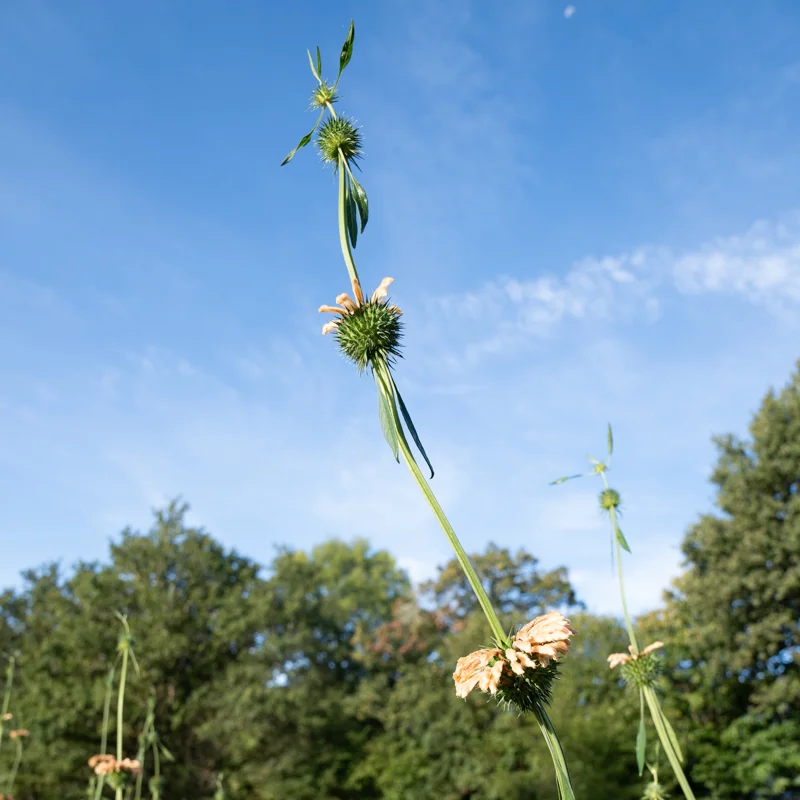Leonotis nepetifolia sp. nepetifolia
This hardy, vigorous species boasts magnificent shaggy, round inflorescences adorned with a corolla of tubular orange flowers, as well as numerous medicinal and culinary properties.
Leonotis is also known as lion's ear or lion's tail.
in bucket
Sow in pots or trays early in the season, at temperatures between 20 and 25°C, under a well-lit shelter, 5 weeks before planting. Transplant the whole clod into the ground or pot after the last frosts, as soon as the plants reach 15 cm. Germination can take up to 3 weeks! Water abundantly when planting.
Drought-resistant, this species prefers sunny locations and draining soils. Helianthus, it should be sheltered over winter in cooler regions.
March, April, May
July, August, September, October
in the ground, in the greenhouse
sunny
medium
clayey, gravel, limestone, sandy, humus
drained
Leonotis nepetifolia sp. nepetifolia
early
25 seeds
Orange
edible
From 200 to 300 cm
Leonotis nepetifolia has traditionally been smoked, alone or mixed with tobacco, as a substitute for cannabis. It has slightly euphoric properties. Leonotis nepetifolia has traditionally been used to treat malaria, epilepsy, fevers, headaches, gastrointestinal disorders, dysentery and snakebites. Depending on the dose, it can stimulate or suppress menstruation - and even induce abortion. Decoctions of the whole plant have been used as a diuretic and to cleanse the uterus. It is also a tonicardiac to treat heart problems induced by anxiety and hypertension - such as tachycardia. It has antinoceptive, sedative, anti-hypoglycemic and anti-inflammatory properties. It is also used for arthritis and diabetes.












